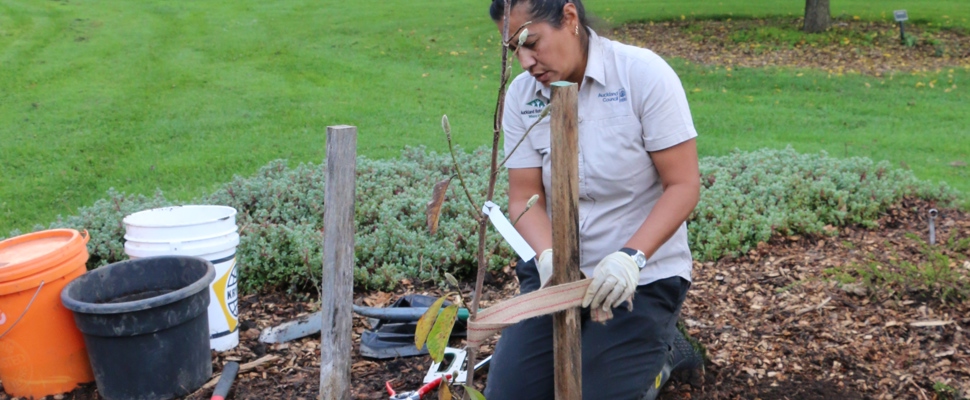
Tree health
Once established, most trees do not need much attention. However, a little ongoing care ensures they remain healthy and structurally sound.
Tips for healthy trees:
- Ensure the planting site is suitable. You may need to work organic matter into the soil before planting. Where waterlogging is likely, the planting site should be raised by adding additional topsoil.
- Plant in autumn, so the tree is well established once soils become drier the following summer
- Apply a layer of organic mulch around the tree after planting to suppress weeds, retain moisture, nourish the soil, and keep potentially damaging machinery such as mowers well away. Do not allow mulch to build up around the trunk.
- Apply a balanced general fertiliser to the drip line of young trees every autumn or spring. Even mature trees benefit from an application of fertiliser every few years.
- It is advisable to avoid using herbicides too close to trees. Some lawn herbicides contain ingredients that can impact trees.
- Thoroughly water in dry periods (especially young trees).
- Avoid compaction of the root zone caused by parking cars or other heavy equipment beneath trees.
- On lifestyle blocks or farms ensure minimal root disturbance from livestock by fencing trees off.
- Young trees often benefit from physical support from winds for the first year or two. When staking a tree securely, insert a minimum of two robust stakes parallel to the prevailing wind direction. Ensure stakes do not go through the root ball.
- Use soft non-abrasive material as ties, such as a soft tree tie or a pair of old stockings. Ties should be tight enough to hold the tree, but not so tight that the tree is unable to sway. Tying this way encourages the tree to support itself gradually.